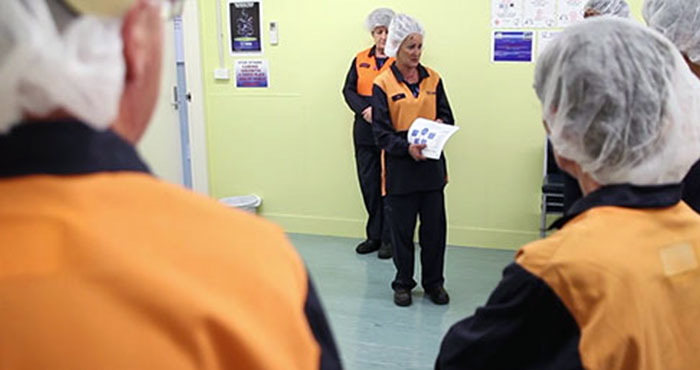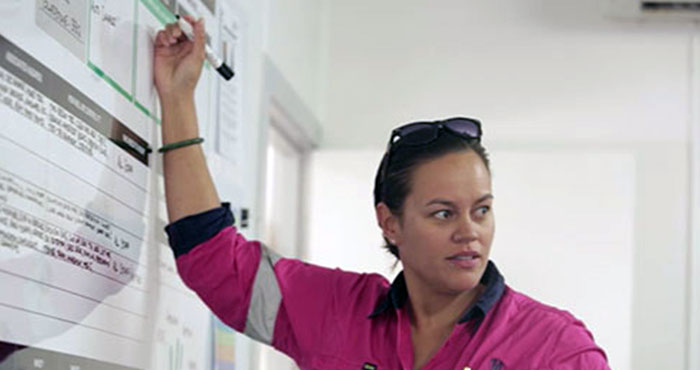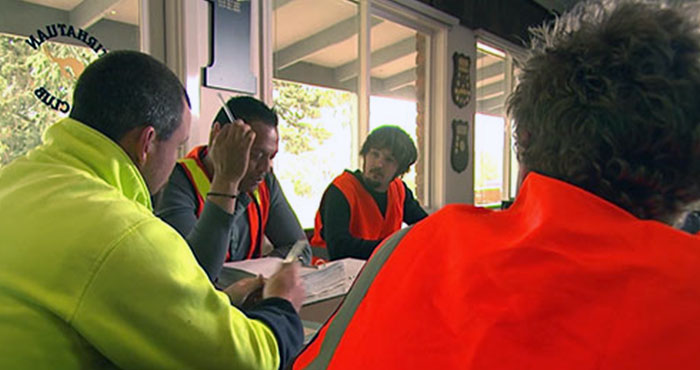

Toolbox talks present a fantastic opportunity for organisations to explore the risks of specific health and safety issues and think about ways to deal with them.
When they are effective and held regularly, they can have a significant, positive impact on health and safety in the workplace.
Sadly, many toolbox meetings fall well short of the mark in terms of engagement and because of this, we’d like to present to you 10 simple steps that might just help you run more engaging, more effective toolbox talks.
Alternatively, CLICK HERE to view and/or download a video on how to run more effective toolbox talks.
01. Planning and preparation
The first and most important step is planning and preparation. Before calling a tool box talk think about whether you really need it to take place.

Do you have to hold it now? What is the subject matter? What do you know about the subject? What comments or questions should you ask the attendees and what can you expect back from them?
You should plan contingencies of how you are going to get the meeting back on track if one person starts to dominate the talking or turns it into a gripe session. The more planned and better prepared you are, the better the meeting.
02. Set a clearly defined goal
During preparation, you should set out a clearly defined goal of exactly what changes of behaviour you would like to achieve after the meeting and how you are going to facilitate that.
This could include how you want to involve the attendees, the questions you may wish to ask them, and other pertinent points to raise if the discussion dries up.
The clearer your goals are prior to the meeting, the better the chance you will have of reaching those goals.
03. Audience preparation
Set a simple reminder 24 to 48 hours prior to the tool box taking place; that the meeting is on and what the objectives are. This will maximise the chances of the attendees being better prepared and well-equipped to participate.
04. Practice
The more knowledgeable you are about a subject, the more confident you will be. Combine that confidence with a few practice sessions on your delivery; and your performance will be far more engaging.
Practice keeping your message simple by using short, easy to understand language and avoid using slang words and jargon.
A well practiced and delivered presentation is just as recognisable as no practice at all and a poor delivery.
05. Use positive feedback
Create a great first impression by some positive feedback for the group.
In between tool box talks, you should make a point of catching someone doing something right from a safety point of view and then start the tool box talk by rewarding that person with some positive feedback on their performance.

Just a small thing like a small gift voucher from a local retailer or maybe just a well worded certificate acknowledging them for their actions can make a huge impact. Even just some positive feedback in front of their peers is powerful.
06. Show enthusiasm for the subject
Good positive eye contact and a loud audible voice that is varied in tone and pitch will always create more interest from the audience.
Focus on the positive! Talk about what can be done to create a healthy and safe working environment instead of what can or has gone wrong.
Remember a picture paints a thousand words so don’t be afraid to use pictures or video to sell your message.They are an effective way of reinforcing important points and can improve the group’s creative thinking and decision making abilities. They can be really helpful to your workmates where English is not their first language.
07. Ask… Don’t tell
Once you have delivered a short enthusiastic introduction to the topic;
- Ask questions early – participants are usually more alert at the start of a meeting
- Keep your introduction brief
- Encourage participation by using open ended questions
People tend to learn more effectively when they are encouraged ti draw on their own experiences rather than being told. So ask.. don’t tell!
08. Let them speak
Once you have mastered the art of getting your audience involved, you will find that some of the most important points from your toolbox talk will in fact emanate from them.

So it’s important to let them speak. Your job is to listen proactively by using positive body language; for example an enthusiastic nod or a smile or through verbal recognition like an “aha” or “great point” can only encourage vibrant discussion.
Work hard to keep the discussion flowing by using follow up questions and requesting the expansion of answers. Welcome alternative points of view and remember your task is to facilitate, not dominate.
09. Seek feedback
Get feedback after each toolbox meeting. Ask the audience; What was good?, What wasn’t so good?, How it could be improved?, Do they think their behaviour might change as a result of the meeting?
Maybe design a short feedback form. This is fantastic knowledge for you when planning your next meeting.
10. A great resource
We are all busier at work today than we have ever been and although much of what we have discussed in this post will deliver back to you in spades, it does require a commitment of time.
If you are short on that time, there are a variety of resources that can help.
Why not use a video say every second toolbox meeting?
There are videos available produced specifically for toolbox talks. They are short and to the point, (between 90 seconds and two minutes long) and extremely effective ….because as we have already stated; a picture does paint a thousand words.
Click here to view Channel 1’s latest series of toolbox talks videos, there are over 40 different topics to choose from. Each video also includes an open ended question to help you get some dynamic discussion happening.
Not only can a video resource save you time, but can be the perfect solution for your organisation to gain maximum benefit from toolbox talks. Here’s an example of one of the modules from the toolbox talks series:

